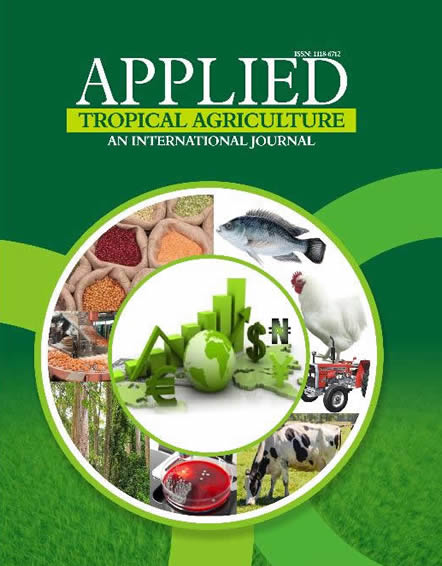Tuwo is a non-fermented, gel like, maize based food commonly eaten among the Hausa ethnic group in Nigeria. This
study aims to investigate the effect of fortification of maize tuwo using Bambara groundnut on the proximate
composition, functional properties and sensory attributes of Bambara-maize tuwo. Blends of the tuwo were produced
using response surface methodology and were subjected to sensory evaluation to determine consumer acceptance
with respect to quality attributes such as appearance, texture, aroma, texture and mouth feel. The proximate
composition of the flour blends showed an increase in protein, fibre ash, and fat content with an increase in the levels
of Bambara groundnut and a decrease in carbohydrate and moisture content. Protein, ash, fibre, fat, moisture and
carbohydrate content varied in the range 8.05–22.25%, 0.69–1.83%, 1.19–3.62%, 2.06–6.68%, 3.31–4.90 and
62.31 –75.41% respectively. The water absorption capacity increased with increase in the level of Bamabara
substitution (1.25-1.70 g/ml) while the swelling index decreased slightly with an increased in Bambara substitute
(2.00-2.50 g/ml). The result of the sensory evaluation shows that tuwo prepared from maize-Bambara flour compare
favorably with 100% maize tuwo. The overall result has shown that it is possible to produce acceptable tuwo from the
combination of maize and Bambara groundnut flour blends.
Keywords: Bambara groundnut, proximate composition, functional properties, maize tuwo, maize flour
PAPER TITLE :PROXIMATE COMPOSITION, FUNCTIONAL AND SENSORY PROPERTIES OF 'TUWO' PREPARED FROM MAIZE (ZEA MAYS) AND BAMBARA GROUNDNUT (VIGNA SUBTERRANEA)
APPLIED TROPICAL AGRICULTURE | VOLUME 24 NUMBER 1 2019
Paper Details
- Author(s) : Arise K. Abimbola*, AkintayoA.Olaide, Akintoye F. Nifemi
- Abstract:


